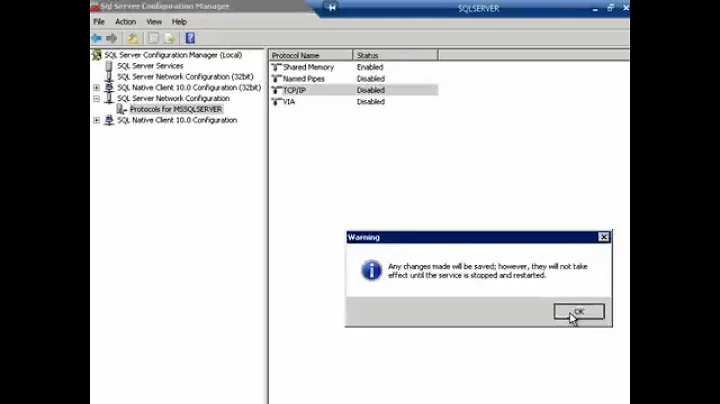SQL Server 2008 R2 - Cannot Connect Remotely (Error 1326)
By default, SQL Server will only allow the local connections. You'll have to run the Surface Area Configurator tool to open it up to allow the remote connections as well.
[edited later]
I stand corrected. SAC is gone with SQl Server 2008.
Beginning in SQL Server 2008, the Surface Area Configuration tool has been removed. The features of the Surface Area Configuration tool that control SQL Server behavior have been replaced and greatly enhanced in the Policy-Based Management feature. [...]
The connectivity management features of the Surface Area Configuration tool are available by using the Configuration Manager tool. For more information about this tool, see SQL Server Configuration Manager.
More details at the SQL Server Configuration Manager page in MSDN.
Related videos on Youtube
Comments
-
Brian Mains over 1 year
For some reason, now I cannot connect to my SQL Server 2008 server remotely. I can login locally, but I get Error 1326 that I cannot connect to the server. SQL Browser is running, firewall ports were opened (I used the script given in Microsoft support link and verified on the server), TCP/IP, named pipes, and shared memory are enabled.
Any idea why I still cannot access it? I'm trying to connect from my laptop over a workstation.
Thanks.
-
Brian Mains about 13 yearsOK, in 2008 R2 there isn't any surface area configuration tool...
-
Brian Mains almost 13 years1433 is enabled in windows firewall...
-
Brian Mains almost 13 yearsNo it didn't, strangely enough. It used to be the fix many a time, but this time it appears to be something else... but I can't figure out what: remote connections are on and 1433 is enabled...
-
 dakab almost 6 years@BrianMains: In both Inbound and Outbound Rules?
dakab almost 6 years@BrianMains: In both Inbound and Outbound Rules?




